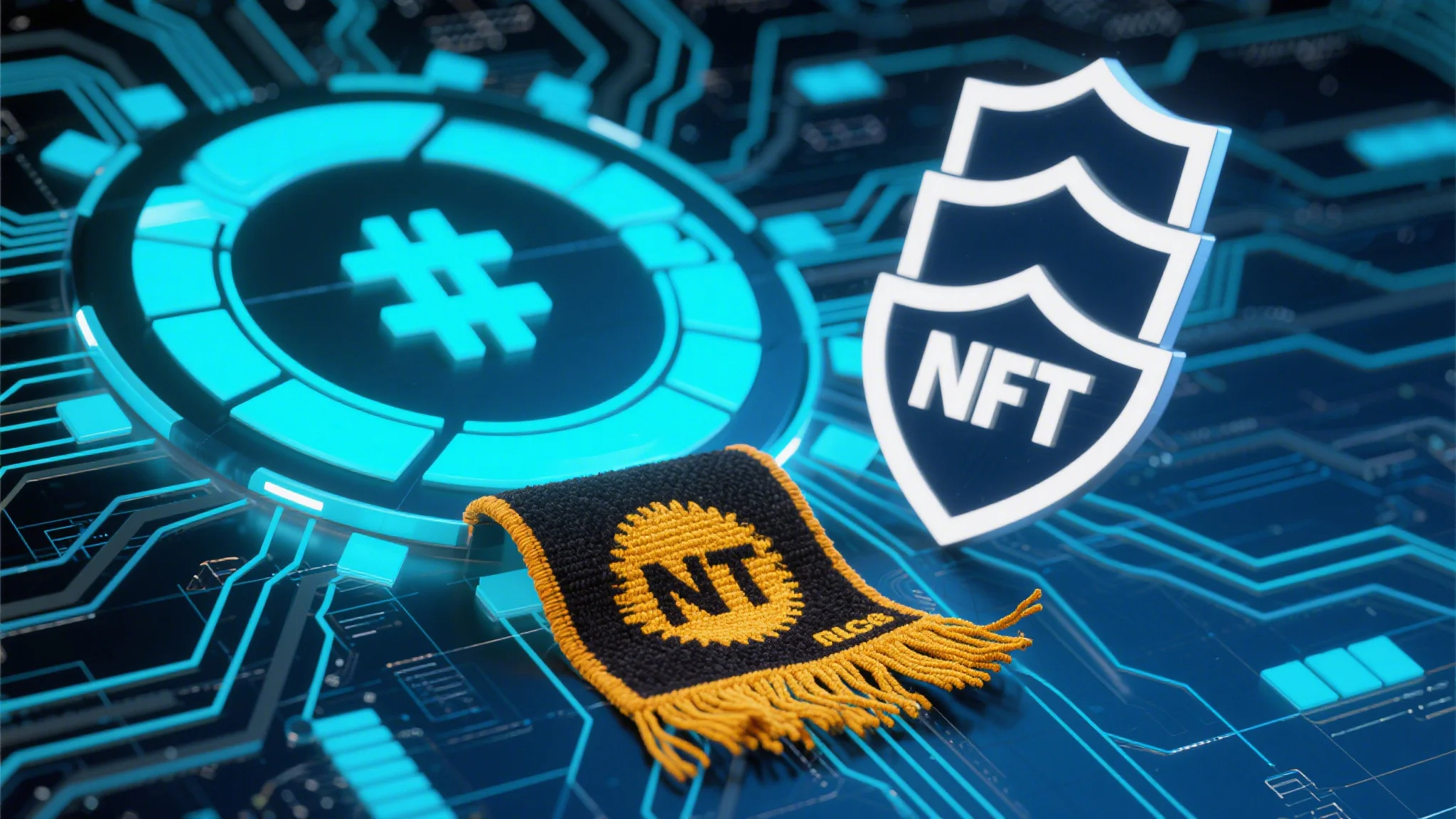The rise of NFTs (Non-Fungible Tokens) has transformed the art, collectibles, and digital asset industries. NFTs are unique digital assets stored on blockchain platforms, providing proof of ownership and authenticity. However, as the NFT market continues to grow, so do the risks associated with smart contracts.

Smart contracts are self-executing agreements with predefined rules stored on a blockchain. They are the backbone of NFT marketplaces, automating transactions, royalty payments, and other functionalities. While smart contracts offer transparency and efficiency, they are also prone to vulnerabilities that can lead to exploits and rug pulls.
What Are Exploits and Rug Pulls?
An exploit is a vulnerability in a smart contract that can be manipulated to steal funds or assets. These exploits often occur due to poor coding practices, logical errors, or incomplete understanding of blockchain mechanics. Rug pulls, on the other hand, are more about malicious intent. In a rug pull, the creators of an NFT project or marketplace intentionally drain funds or abandon the project, leaving investors and collectors with worthless assets.
Both exploits and rug pulls can have devastating effects on the NFT ecosystem. They erode trust, damage reputations, and lead to financial losses for participants. As a result, ensuring smart contract security has become a critical concern for NFT creators, investors, and marketplace operators.
Common Vulnerabilities in NFT Smart Contracts
Reentrancy Attacks:
Reentrancy attacks occur when a smart contract allows an attacker to drain funds by repeatedly calling a function that transfers tokens or ETH. This vulnerability was famously exploited in the DAO hack of 2016, and it remains a significant threat in NFT marketplaces.
Unverified Code:
Many NFT projects use third-party tools or templates to create their smart contracts. If these contracts are not thoroughly audited and verified, they can contain hidden vulnerabilities or backdoors that attackers can exploit.
Poor Error Handling:
Smart contracts often handle errors or exceptions poorly, leading to unintended outcomes. For example, a contract might fail to account for edge cases like insufficient funds or invalid addresses, creating opportunities for exploitation.
Front-Running and Manipulation:
Front-running occurs when a miner or validator processes a transaction before it is broadcasted, effectively exploiting the system for personal gain. This can happen in NFT marketplaces if the smart contract logic is not properly secured against such attacks.
Insufficient Royalty Payments:
Some NFT projects fail to implement proper royalty structures, leading to disputes or financial losses for creators. If the smart contract does not enforce royalties correctly, collectors might end up paying less than expected, or creators might not receive their fair share.
The Role of Audits and Verification
To mitigate these risks, it’s essential to conduct thorough audits and verification of smart contracts. An audit involves a team of blockchain experts reviewing the contract code to identify vulnerabilities and suggest fixes. While audits can be time-consuming and costly, they are a critical step in ensuring the security of NFT projects.
In addition to audits, NFT creators should use proven smart contract templates and frameworks. Platforms like OpenZeppelin provide preaudited smart contract templates that are designed to be secure and reliable. By leveraging these resources, creators can reduce the risk of vulnerabilities in their contracts.
Educating the Community
Another crucial aspect of smart contract security is education. NFT creators, investors, and marketplace operators must understand the risks associated with smart contracts and how to mitigate them. This includes staying informed about the latest security practices, participating in security audits, and engaging with the broader blockchain community.
By prioritizing smart contract security, the NFT ecosystem can build trust, foster growth, and protect its participants from the devastating effects of exploits and rug pulls.
Best Practices for Avoiding Exploits and Rug Pulls
As the NFT market continues to evolve, the importance of smart contract security cannot be overstated. Whether you’re a creator, investor, or marketplace operator, taking steps to avoid exploits and rug pulls is essential for long-term success. Below are some best practices to help you navigate the complexities of NFT smart contract security.
1. Use Proven and Verified Templates
One of the most effective ways to ensure smart contract security is to use proven and verified templates. Many NFT projects rely on third-party tools and platforms to create their smart contracts. While these tools can save time and effort, they may not always prioritize security.
To mitigate this risk, consider using templates from reputable sources like OpenZeppelin, ERC721, or ERC1155. These frameworks are widely used and have been thoroughly audited, reducing the likelihood of vulnerabilities in your contract. Always verify the code and ensure that it aligns with your project’s requirements.
2. Conduct Comprehensive Audits
Even with verified templates, it’s crucial to conduct a thorough audit of your smart contract. An audit involves a team of blockchain experts reviewing the code to identify potential vulnerabilities, logical errors, and areas for improvement.
While audits can be costly, they are a worthwhile investment in the long run. A single exploit or rug pull can lead to significant financial losses and damage your project’s reputation. By investing in an audit, you can ensure that your smart contract is secure and reliable.
3. Implement Proper Error Handling
Smart contracts often fail due to poor error handling. Whether it’s an invalid address, insufficient funds, or a missing parameter, errors can lead to unintended outcomes and potential exploitation.
To avoid this, implement robust error handling mechanisms in your contract. This includes validating inputs, setting appropriate fallback functions, and providing clear error messages. By anticipating potential issues and addressing them proactively, you can reduce the risk of vulnerabilities in your contract.
4. Avoid Unnecessary Complexity
Smart contracts can be complex, but complexity often leads to vulnerabilities. When designing your contract, aim for simplicity and clarity. Avoid adding unnecessary features or layers of logic, as this can increase the risk of errors and exploitation.
If you’re unsure about a particular feature or functionality, consult with a blockchain expert or seek guidance from the community. Remember, a simpler contract is often a safer contract.
5. Use Reentrancy Guards
Reentrancy attacks are a common threat in blockchain projects. To protect against these attacks, implement reentrancy guards in your smart contract. A reentrancy guard is a mechanism that prevents attackers from reentering a function and draining funds.
One popular approach is to use the OpenZeppelin ReentrancyGuard library, which provides a simple and effective way to prevent reentrancy attacks. By integrating this guard into your contract, you can significantly reduce the risk of exploitation.
6. Monitor for Updates and Vulnerabilities
The blockchain space is constantly evolving, and new vulnerabilities are discovered regularly. To stay ahead of potential threats, monitor for updates and vulnerabilities in your smart contract and the platforms you use.
Subscribe to security newsletters, follow blockchain security blogs, and participate in online forums. By staying informed, you can take proactive steps to address potential risks and protect your project.
7. Build a Strong Community
Community plays a vital role in the success of NFT projects. By building a strong, engaged community, you can foster trust and collaboration, which are essential for long-term growth.
Encourage your community to report potential vulnerabilities and participate in security audits. A proactive community can help identify and address issues before they become major problems. Additionally, transparent communication can help build trust and credibility with your audience.
8. Implement KYC and AML Procedures
Know Your Customer (KYC) and Anti-Money Laundering (AML) procedures are essential for ensuring the integrity of your NFT marketplace. By verifying the identities of participants and monitoring for suspicious activity, you can reduce the risk of fraud and exploitation.
While KYC and AML procedures can be resource-intensive, they are a critical step in building a secure and compliant marketplace. Consider using third-party tools and platforms to streamline the KYC and AML processes.
9. Provide Clear Terms and Conditions
Finally, provide clear and concise terms and conditions for your NFT marketplace. This includes outlining the rules for transactions, disputes, and refunds. By setting expectations upfront, you can reduce the risk of misunderstandings and conflicts.
Additionally, ensure that your terms and conditions are legally compliant and enforceable. Consult with a legal expert to review your contract and ensure that it meets all relevant regulations and standards.
Smart contract security is a critical concern in the NFT marketplace. Exploits and rug pulls can have devastating effects on creators, investors, and collectors, eroding trust and damaging reputations. By following best practices, such as using verified templates, conducting audits, and implementing robust security measures, you can reduce the risk of vulnerabilities and protect your project from potential threats.
As the NFT ecosystem continues to grow, the importance of smart contract security will only become more apparent. By prioritizing security and fostering a culture of trust and transparency, the NFT industry can thrive and deliver value to its participants for years to come.




